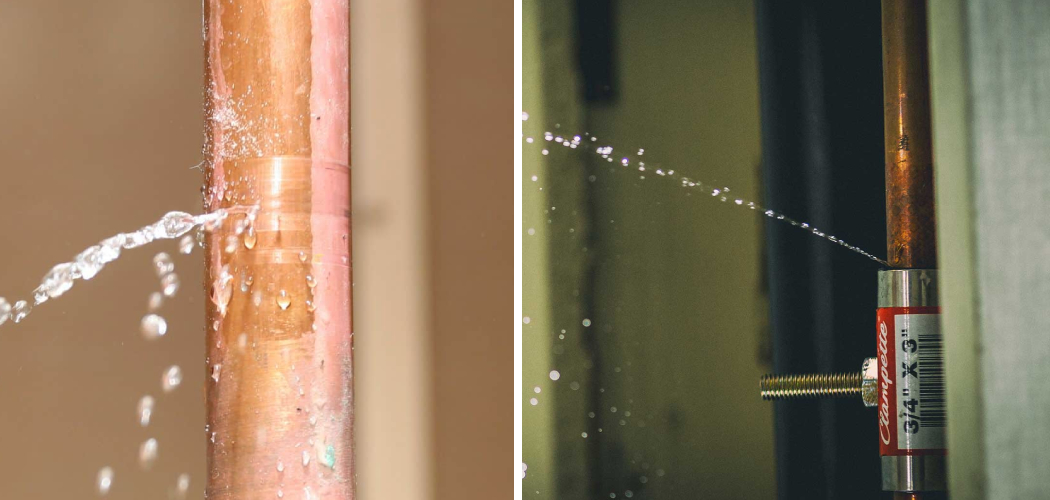A pinhole leak in a plastic water pipe may seem like a minor issue at first, but it can quickly turn into a major problem if left unaddressed. Not only can it lead to significant water damage and mold growth, but it can also result in higher utility bills due to wasted water.
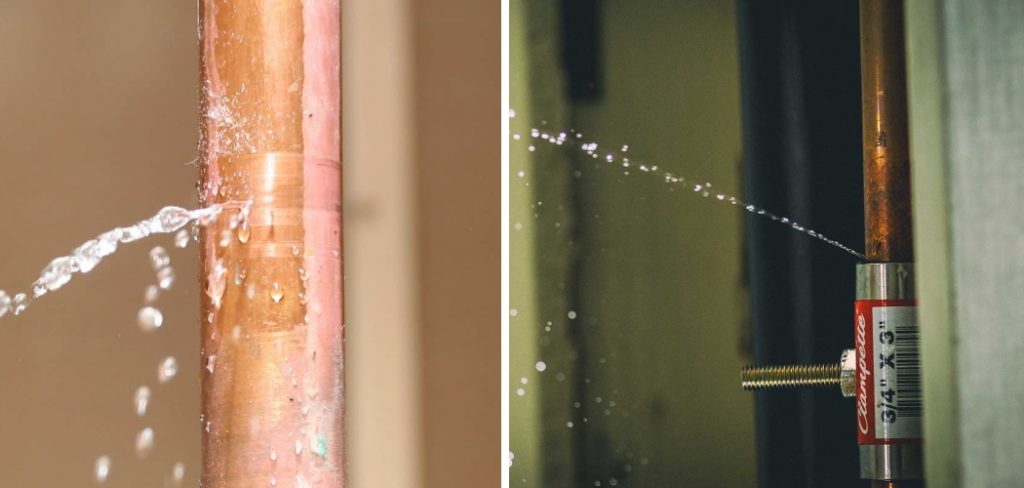
A pinhole leak in a plastic water pipe can be quite a nuisance, causing sudden drops in water pressure and potential damage to your property. Fortunately, fixing such leaks is not as daunting as it may seem. In this guide, we will cover the process of fixing a pinhole leak in plastic water pipes, including some helpful tips and tricks along the way. In this blog post, You will learn in detail how to fix a pinhole leak in plastic water pipe.
Step by Step Processes for How to Fix a Pinhole Leak in Plastic Water Pipe
Step 1: Inspect the Leak
The first step in fixing a pinhole leak in a plastic water pipe is to locate where the leak is coming from. Inspect the area for any signs of moisture or dripping water.
Step 2: Turn off the Water Supply
Before attempting to fix the leak, it’s important to turn off the main water supply. This will help prevent further damage and keep the water from leaking out. Once the water supply is turned off, use a clean cloth or towel to dry the area around the leak. This will give you a better view of the damage and make it easier to work on.
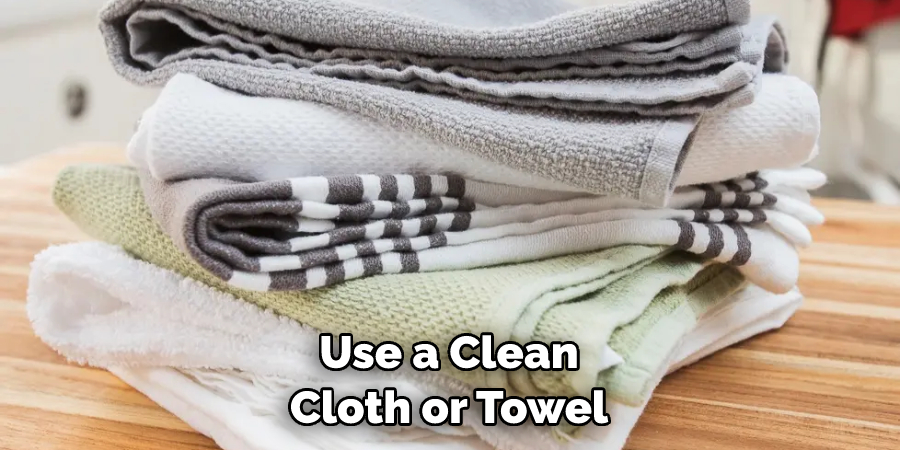
Step 3: Prepare the Materials You Will Need
To fix a pinhole leak in a plastic water pipe, you will need the following materials: a rubber patch, sandpaper, PVC cement, and a primer. Using sandpaper, gently sand the area around the leak to remove any rough edges or debris. This will help create a smoother surface for the patch to adhere to.
Step 4: Apply Primer to the Pipe
Next, apply a thin layer of primer to the area around the leak. This will help the PVC cement bond better with the pipe and create a stronger seal. Using a brush or your finger, apply PVC cement to one side of the rubber patch. Make sure to cover the entire surface that will be in contact with the pipe.
Step 5: Place the Patch over the Leak
Carefully place the patch over the leak, making sure it is centered and covers the entire damaged area. Press down firmly to ensure a good bond between the patch and pipe. Allow the PVC cement to dry completely before turning on the water supply again. This can take anywhere from 10-30 minutes depending on the temperature and humidity.
Step 6: Turn on the Water Supply
Once the PVC cement is dry, turn on the water supply and check for any leaks. If there are no signs of leaking, then you have successfully fixed the pinhole leak in your plastic water pipe.
By following these step-by-step processes, you can easily fix a pinhole leak in a plastic water pipe without having to call a professional plumber. Remember to always take necessary safety precautions and turn off the water supply before attempting any repairs.
Safety Tips for How to Fix a Pinhole Leak in Plastic Water Pipe
- The first step to fixing a pinhole leak in a plastic water pipe is to turn off the main water supply. This will prevent any further damage or flooding.
- Before attempting to repair the leak, make sure you are wearing the appropriate safety gear such as gloves, safety goggles, and a face mask. This will protect you from any potential chemicals and debris.
- If the pinhole leak is located in a hard-to-reach area, use a sturdy ladder or step stool to safely access the area. Do not stand on chairs or unstable objects.
- To avoid any accidental electrocution, make sure all electrical appliances near the leak are turned off and unplugged. It is also recommended to wear rubber-soled shoes.
- Clean the area around the leak with a damp cloth or sponge to remove any dirt and debris. This will ensure a better adhesion for the repair material.
- When applying a patch or sealant, make sure to follow the manufacturer’s instructions carefully. Use only materials specifically designed for repairing plastic water pipes.

By following these safety tips and precautions, you can successfully fix a pinhole leak in a plastic water pipe without any harm to yourself or your property. Remember to always prioritize your safety and take necessary precautions when dealing with potential hazards.
What Are the Common Causes of a Pinhole Leak in Plastic Water Pipes?
Pinhole leaks in plastic water pipes can be caused by a number of factors, including:
1. Age and wear
Over time, plastic water pipes can become brittle and weak due to exposure to UV rays, chemicals, or extreme temperatures. This can lead to small cracks or holes forming in the pipe.
2. Chemical damage
Certain chemicals found in soil or water can corrode or degrade plastic pipes, making them more susceptible to leaks.
3. High water pressure
Excessively high water pressure can put stress on plastic pipes, causing them to weaken and develop small leaks.
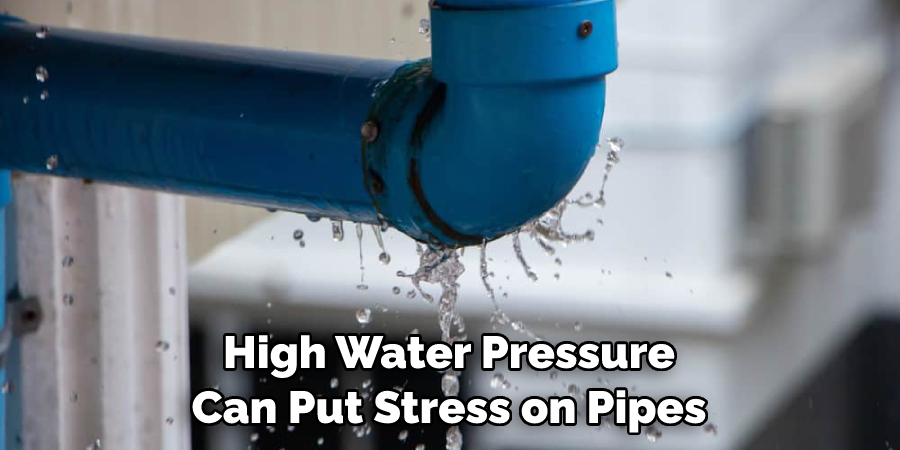
4. Poor installation
If the plastic pipes were not installed correctly, this can lead to weak spots in the pipe that may eventually result in a pinhole leak.
In order to prevent pinhole leaks from occurring in your plastic water pipes, it is important to regularly inspect and maintain them. Look for any signs of damage or wear and address them promptly to avoid potential problems in the future.
What Are Some Common Mistakes to Avoid When Fixing a Pinhole Leak in Plastic Water Pipes?
1. Using the Wrong Type of Tape or Sealant
When dealing with a pinhole leak in your plastic water pipe, it may be tempting to use any type of tape or sealant you have on hand. However, this can actually make the situation worse. Using the wrong type of tape or sealant can cause further damage to your pipe and even lead to more leaks in the future.
2. Applying Too Much Pressure on the Pipe
When attempting to fix a pinhole leak, it’s important to be gentle and not apply too much pressure on the pipe. Applying excessive force can cause the hole to become bigger and eventually burst.
3. Not Properly Cleaning the Area
Before fixing a pinhole leak, it’s crucial to properly clean the area surrounding the leak. Any dirt, debris or moisture can prevent proper adhesion of the tape or sealant and cause the repair to be ineffective.
4. Not Properly Cleaning the Area Around the Leak
Along with cleaning the area surrounding the leak, it’s also important to clean the area around the leak itself. This ensures that there is no buildup of grime or corrosion that could interfere with the repair.
5. Ignoring Small Leaks and Waiting for Them to Get Bigger
It’s easy to brush off a small pinhole leak, especially if it’s not causing any major issues. However, ignoring a small leak can lead to bigger problems in the future. It’s best to address the issue as soon as possible before it becomes more difficult and costly to fix.
6. Not Using Proper Safety Measures
Working with pipes and water can be dangerous, especially if there is a leak involved. It’s important to wear protective gear such as gloves and safety glasses while fixing a pinhole leak. Additionally, make sure to turn off the water supply before attempting any repairs.

Are There Any Long-term Solutions to Prevent Pinhole Leaks From Occurring in Plastic Water Pipes?
Pinhole leaks in plastic water pipes can be a frustrating problem for homeowners and property owners. These small holes, typically less than 1/8 inch in diameter, can cause significant damage to walls, floors, and the overall integrity of the plumbing system. While there are ways to temporarily fix these leaks, such as using tape or epoxy, many people wonder if there are any long-term solutions to prevent them from occurring in the first place.
One of the main causes of pinhole leaks in plastic water pipes is corrosion. This can happen due to a variety of factors, including chemical reactions with the water or soil, high levels of chlorine in the water supply, and even improper installation. So, one way to prevent these leaks is by using materials that are less prone to corrosion, such as copper pipes or PEX (cross-linked polyethylene) pipes.
What Are Some Tips for Maintaining and Checking Plastic Water Pipes to Prevent Pinhole Leaks?
Plastic water pipes are commonly used in residential and commercial plumbing systems due to their affordability, flexibility, and ease of installation. However, over time, these pipes can develop pinhole leaks that can cause significant damage if not addressed promptly.
- Regular maintenance is key to preventing pinhole leaks in plastic water pipes. Inspect the pipes at least once a year for any signs of damage or wear and tear, such as discoloration, bulging, or cracking.
- To check for potential pinhole leaks, run your hand along the length of the pipe and feel for any soft spots or bubbles. These are indications of a pinhole leak and should be addressed immediately.
- Keep an eye on the water pressure in your plumbing system. Excessively high water pressure can cause stress and wear on plastic pipes, leading to pinhole leaks. Use a pressure gauge to monitor the pressure and adjust it if necessary.
- To maintain proper water flow and prevent clogs that can lead to pinhole leaks, regularly flush out your plumbing system. This can be done by turning off the water supply and running all faucets for a few minutes.
- Be careful when using chemicals or drain cleaners in your plumbing system as they can corrode plastic pipes and cause pinhole leaks. Instead, opt for natural alternatives or consult a professional plumber for safe and effective solutions.
- In areas with hard water, consider installing a water softener to prevent mineral buildup and corrosion in your plastic pipes. This can help prolong their lifespan and prevent pinhole leaks.
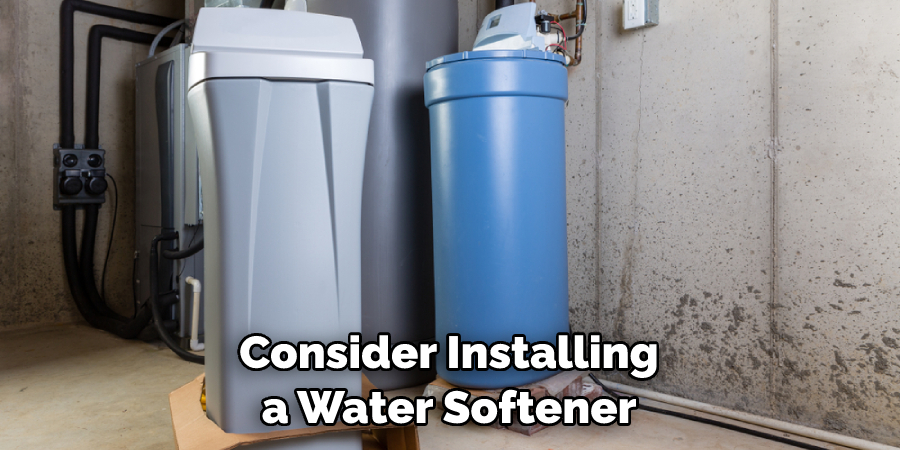
By following these maintenance tips and regularly checking your plastic water pipes, you can greatly reduce the chances of developing a pinhole leak. However, if you do find a pinhole leak, it is important to take immediate action to fix it.
Conclusion
In conclusion, fixing a pinhole leak in a plastic water pipe is not as daunting as it may seem. While there are certain disadvantages to using this method, such as the need for specialized tools and some potential for future leaks, these can easily be overcome with proper preparation and maintenance.
One of the main advantages of fixing a pinhole leak in a plastic water pipe is the cost-effectiveness. This method is much cheaper than replacing the entire pipe, which can save you a significant amount of money in the long run.
Additionally, it is a relatively simple and quick process that can be done by anyone with basic DIY skills. I hope this article has been beneficial for learning how to fix a pinhole leak in plastic water pipe. Make Sure the precautionary measures are followed chronologically.

